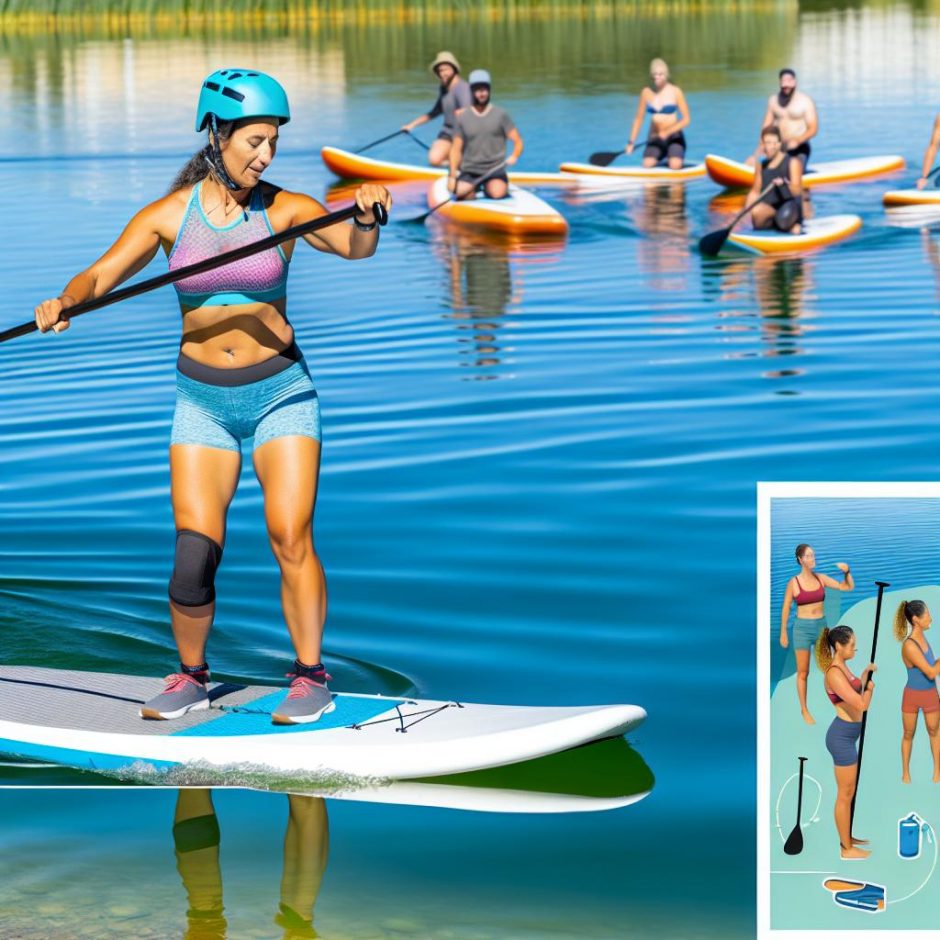Understanding the Basics of Paddleboarding
Paddleboarding is a water sport that seamlessly blends the elements of both surfing and canoeing. Its rise in popularity over recent years can be attributed to its accessibility and the myriad health benefits it offers. Whether you’re seeking a tranquil day on a serene lake or an adventurous workout on the open sea, paddleboarding provides an excellent avenue for both. This document delves into the fundamentals that every enthusiast needs to know before stepping onto the water.
Choosing the Right Equipment
Selecting the correct equipment plays a crucial role in ensuring that your paddleboarding experience is both enjoyable and safe. The paddleboard itself is the most critical piece of equipment. Boards are designed with specific activities in mind and can be broadly categorized into three types: all-around, touring, and racing boards.
All-around boards are versatile, ideal for beginners who are just starting and those who enjoy a variety of paddleboarding activities. These boards generally offer more stability due to their breadth and length. Touring boards, on the other hand, are designed for those looking to cover longer distances. They often have a sleeker design, which helps cut through the water with ease. Racing boards cater to those interested in speed and competition; they are usually narrow and long, allowing for swift movement.
The paddle should also be carefully chosen. A paddle that is too long or too short can lead to inefficient strokes and potential discomfort. As a guideline, the paddle should extend 6-10 inches above the user’s height. This size facilitates effective strokes while minimizing strain on the shoulders and arms.
Basic Stand-Up Paddleboard (SUP) Techniques
Mastering basic SUP techniques is imperative for newcomers to enhance their balance and stroke efficiency. Standing on the Board: To maintain stability, position yourself centrally on the board with your feet parallel, approximately shoulder-width apart. It’s essential to bend your knees slightly and keep your back straight; this posture not only aids in balance but also enables quick responses to the movement of water underneath.
Paddling Techniques: The paddle stroke should engage the core muscles rather than relying solely on the arms. This is achieved by rotating your torso as you paddle, ensuring that your whole body contributes to the stroke. This approach not only conserves energy but also enhances the power and efficiency of your strokes.
Advanced Paddleboarding Skills
Upon acquiring basic proficiency, enthusiasts can proceed to more advanced paddleboarding techniques that can significantly improve maneuverability and effectiveness on the water.
Turning Techniques: The sweep stroke is effective for making wide, smooth turns. This technique involves extending the paddle outward and sweeping it in a wide arc from the front of the board to the back. For tighter and quicker pivots, the cross-bow stroke is preferred. It requires you to bring the paddle across the front of your body to the opposite side of the board for swift turning.
Navigating Water Conditions: Advanced paddleboarders often encounter varied water conditions, from calm lakes to wavy seas. Learning to navigate these different environments, understanding how currents and waves affect your board’s movement, and knowing how to adjust your balance accordingly are skills that require practice and experience.
Practicing Safety Measures
Safety should always be the foremost consideration in paddleboarding. Novices and seasoned paddleboarders alike should adhere to key safety measures to ensure a secure experience on the water.
Use of Safety Gear: Wearing a life vest or a personal flotation device (PFD) is highly advisable. Even the most experienced individuals can encounter unexpected challenges, making a PFD a vital piece of gear.
Pre-boarding Precautions: Always check the weather and water conditions before setting out. A clear understanding of the day’s forecast can help prevent unpleasant surprises. Familiarize yourself with local regulations concerning watercraft, as these can vary by location.
Awareness of Surroundings: Always remain cognizant of other watercraft in your vicinity. Collisions can be prevented by keeping a consistent lookout for others and maintaining a safe distance.
Expanding the Paddleboarding Experience
As you gain confidence on your paddleboard, you may want to explore complementary activities that harness your developed skills.
SUP Yoga: This variant blends the tranquility of yoga with the gentle ebb and flow of water, offering a unique exercise in balance and concentration.
Racing and Touring: For those seeking competition or exploration, participating in races or undertaking long-distance tours can be incredibly rewarding. These pursuits offer a chance to test your speed and endurance.
Engaging with Local Clubs or Groups can also be beneficial. These organizations often provide community support, offer lessons, arrange outings, and facilitate skill-sharing sessions among members.
In conclusion, whether you’re a novice looking to try paddleboarding for the first time or an experienced enthusiast eager to hone your skills, understanding the essentials outlined in this document is crucial. For further information, including more detailed guides and instructional videos, visiting resources such as SUP Board Guide and Paddleboarder.com can be valuable.

